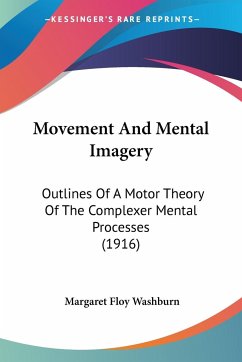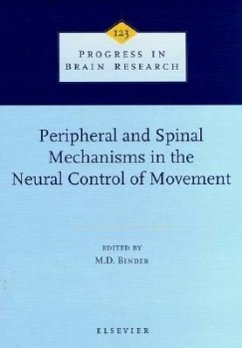
Movement And Mental Imagery
Outlines Of A Motor Theory Of The Complexer Mental Processes (1916)
Versandkostenfrei!
Versandfertig in 1-2 Wochen
28,99 €
inkl. MwSt.

PAYBACK Punkte
14 °P sammeln!
Movement and Mental Imagery: Outlines of a Motor Theory of the Complexer Mental Processes is a book written by Margaret Floy Washburn in 1916. The book explores the relationship between mental imagery and movement, suggesting that the two are closely linked. Washburn argues that movement is a fundamental aspect of mental processes, and that mental imagery is essentially a form of movement in the mind.The book is divided into two parts. The first part provides a theoretical framework for understanding the relationship between movement and mental imagery. Washburn discusses the role of the nervo...
Movement and Mental Imagery: Outlines of a Motor Theory of the Complexer Mental Processes is a book written by Margaret Floy Washburn in 1916. The book explores the relationship between mental imagery and movement, suggesting that the two are closely linked. Washburn argues that movement is a fundamental aspect of mental processes, and that mental imagery is essentially a form of movement in the mind.The book is divided into two parts. The first part provides a theoretical framework for understanding the relationship between movement and mental imagery. Washburn discusses the role of the nervous system in controlling movement and the ways in which mental imagery can be used to simulate movement. She also explores the relationship between motor processes and perception, arguing that perception is fundamentally tied to the body and its movements.The second part of the book provides a series of case studies and experiments that illustrate the principles outlined in the first part. Washburn uses these examples to demonstrate the ways in which movement and mental imagery are intertwined in complex mental processes such as language, memory, and problem-solving.Overall, Movement and Mental Imagery is a pioneering work in the field of psychology that explores the connection between the body and the mind. It provides a compelling argument for the importance of movement in mental processes and offers insights into the ways in which mental imagery can be used to enhance our understanding of the world around us.This scarce antiquarian book is a facsimile reprint of the old original and may contain some imperfections such as library marks and notations. Because we believe this work is culturally important, we have made it available as part of our commitment for protecting, preserving, and promoting the world's literature in affordable, high quality, modern editions, that are true to their original work.












